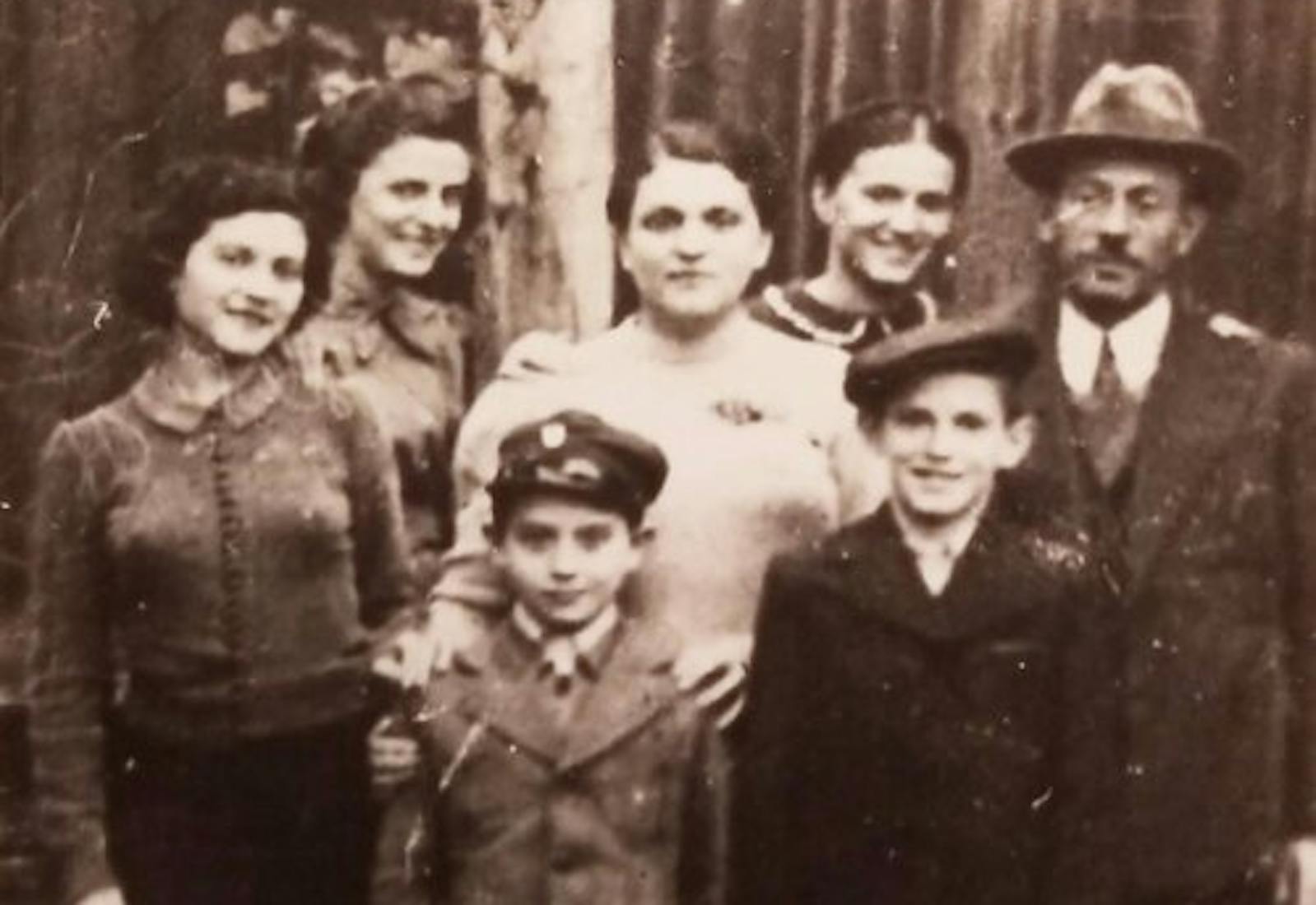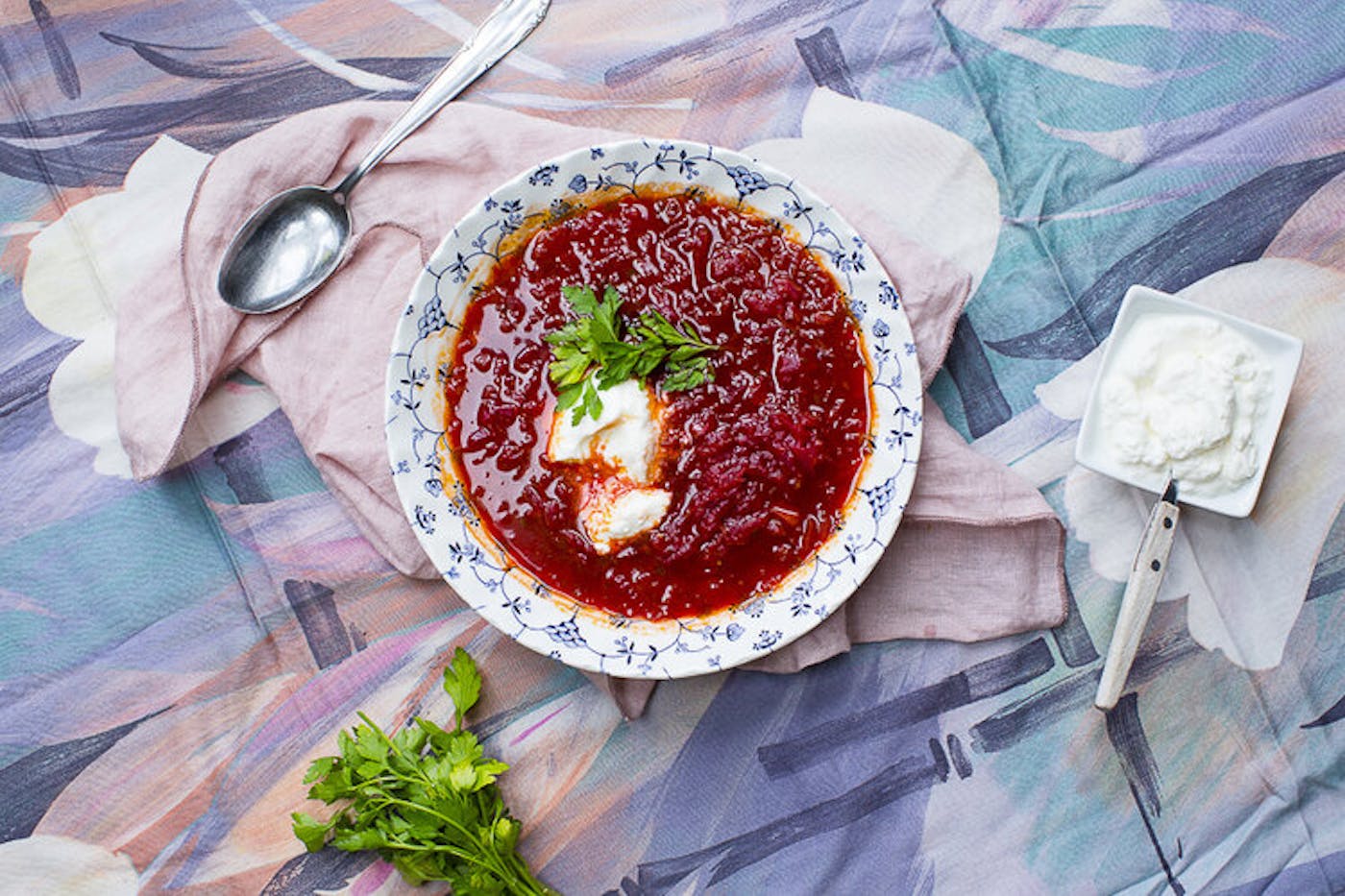Shared by Jacky Boudreaux


Jacky Boudreaux’s mother Helen and aunt Rose “looked like twins, but they were extremely different people,” Jacky recalls. Rose lived in Queens and rarely cooked, immersing herself in city life, while Helen lived in Colorado and collected copies of Gourmet and Bon Appetit magazines, cooking often. “My mom used to call [our families] city mouse and country mouse,” Jacky says. Despite the distance and their differences, Helen and Rose, who were born in 1924 and 1922 respectively, were very close and visited one another often when Jacky was growing up.
On visits to aunt Rose’s small apartment at 93rd Street and Northern Boulevard in Queens, the sisters would go to Waldbaum’s, a supermarket in the neighborhood, and pick up flanken, beets, carrots, and celery to recreate their mother Esther’s recipes for borscht that they remembered from Poland. There were other recipes too like “Moishe salad” made with string beans, hard boiled egg, sauteed onions, and mayonnaise. “My aunt would remember something and my mom and her would figure it out,” Jacky says.
Those culinary memories trace back to a childhood in a one-room stucco house in the small town of Proszowice, 40 kilometers outside of Krakow. When the war broke out, the family fled the town to the Krakow Ghetto. “You were lucky if you could get in there,” she adds. The family did, but was ultimately torn apart. Their father was sent one way, and Rose, Helen, Esther were moved between a series of camps and a factory where they were forced to inspect munitions. During the war, Esther passed away. The sisters also tragically lost two brothers, one before the war and another right after it.
The remaining family members, Rose, Helen, and their father, reunited after the war and moved to the United States. First settling on the Lower East Side, Helen went to Colorado for treatment when she fell ill with tuberculosis. It was here, at a Jewish hospital, that she met Leon, a survivor of Dachau from Berlin also being treated for TB. “They courted in the hospital,” Jacky says and married, building a new life for themselves together in Colorado.
“I had wonderful parents. They weren’t victims, They were victimized, but they were never victims and I think that’s a really nice thing that I’ve learned,” she adds.
In their home, Helen kept alive recipes from Leon’s childhood, learning to make stuffed cabbage, rouladen, or beef rolled around a mixture of sauteed onions, parsley and breadcrumbs, and Linzer tortes. She also made exceptional blintzes and gefilte fish, shopping at a Japanese fish market run by individuals who were forced into internment camps during the war. For Hanukkah, she made fried Polish cookies called fattigman, that were supposed to look like a deer antler. “My mom could remember Polish recipes and adapt them a little bit too,” Jacky says.
She made the family borscht for Passover and anytime beets and carrots were in season. “Maybe she had red fingers four or five times a year,” Jacky says. And Jacky was always there, in the kitchen with her mother learning from her. “I don’t even know when I started to cook things at her hand. It’s like breathing. I was always at her side cooking.”
